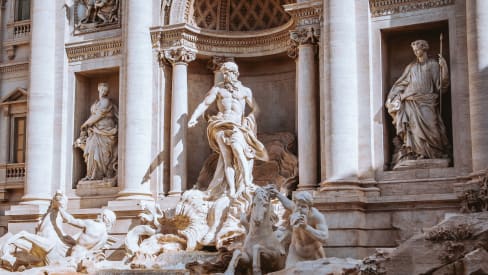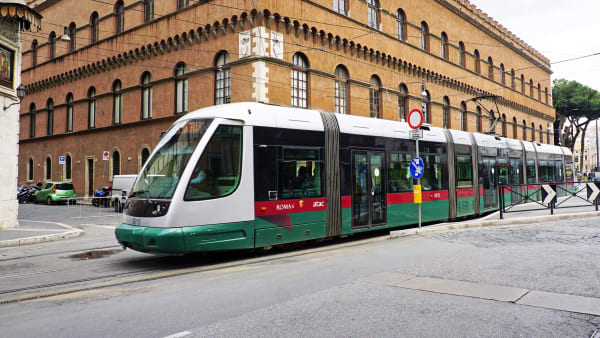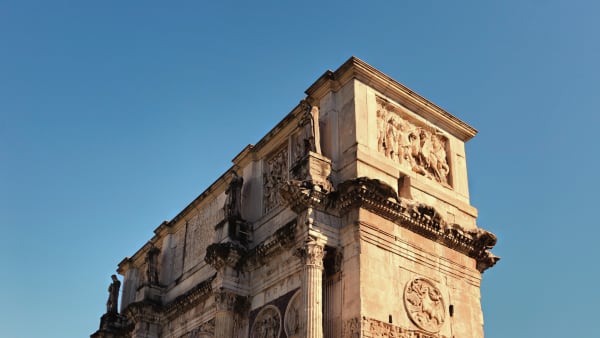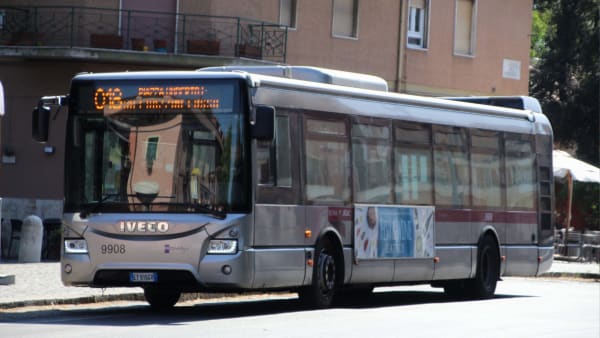Architectural elements
Architectural elements
The Trevi Fountain is rich in majestic works and details from different periods of Roman history. Some parts have already been mentioned in the historical section of this article and will be explained in more detail below.
The structure
Surprisingly, the fountain is located in the facade of a palace, where the entrance to the Conti di Poli (Palazzo Poli) should have been. The original facade was considered vulgar and Salvi wanted to disguise it by placing one with a background that perfectly matched the building.
Looking at the monument in its grandeur, it’s clear that the sea is the main feature of the landscape. The structure is located in a large rectangular basin with rounded corners, surrounded by a walkway that runs from one side to the other.
The central part of the work is decorated with large columns to accentuate it. The whole is shaped like a triumphal arch, celebrating victory and the importance of life, represented by the water constantly in motion.
The statue of Oceanus
The fountain is dominated by a rocky cliff that encompasses the entire lower section. In the center is a prominent niche in which stands a large statue of the Greek sea god and Titan, Oceanus.
He appears on a shell-shaped chariot, with his upper body partially turned and his left foot resting on the edge of the shell to help himself keep his balance. A cloth barely covers his pelvis and pubic bone, and with the scepter he holds he seems to direct the course of the water.
Built by Pietro Bracci, the imposing statue is more than six meters high, hewn from giant blocks of marble. In size, it even surpasses Michelangelo’s David.
The chariot and the winged horses
The shell-shaped chariot is pulled by two winged horses, led by two Tritons (young sea gods). One of them is strong and young, the other is older and blows a buccina (an ancient wind instrument shaped like a shell) to announce their passage.
The horse with wings on the left is restless and the one on the right is calm. They refer to the contrast of the sea which can be calm and peaceful but also stormy and dangerous.
The statues of Abundance and Health
On both sides of the large central niche are two smaller niches containing the personifications of Abundance and Health, both created by sculptor Filippo della Valle.
The statue of Abundance on the left holds the symbolic horn full of fruit and coins. At her feet is a fallen vase, which is surrounded by flowers, from which water flows. Above the statue is a relief that shows Agrippa instructing his soldiers where the Aqua Virgo should be built.
The statue of Health on the right is scantily clad and decorated with laurel leaves. The figure holds a spear in her left hand, symbolizing purity. In her right hand, she holds a cup with a serpent, the emblem of medicine.
In ancient Rome, it was a custom to build a monument at places where there was a water source. The relief above the personification of Health shows the young girl (virgin) indicating the soldiers the way to the spring.
Salvi initially intended to place a statue of Agrippa and another one of the Virgin where the statues of Abundance and Health currently stand. The original project was later modified.
Allegories of the benefits of water
Finally, four large Corinthian columns support the upper elevation, on which are four smaller allegorical statues. These were sculpted by Agostino Corsini, Bernardino Ludovisi, Francesco Queirolo and Bartolomeo Pincellotti. They represent the positive effects of rain on the fertility of the earth and the four main productions that depend on the availability of water.
The first sculpture on the left holds a horn full of fruit and represents the abundance of fruits. The second holds ears of corn in her hand and represents the fertility of the fields. The third holds a cup and grapes, symbolizing the products of autumn. The last one is decorated with flowers and represents the joy of meadows and gardens.
Flora and fauna themed decorations
The fountain also features numerous marble decorations of all kinds of plant species, distributed in all corners of the work. It’s possible to distinguish more than 30 species carved on the stones.
On the facade of Palazzo Poli, on the side of Piazza dei Crociferi, a wild fig tree on top of the balustrade and a caper plant are sculpted. Below the statue of Health are a swamp bush, four branches of ivy, a prickly pear, lake reeds, and an oak trunk.
Under the large ace of cups are an artichoke, a vine with four bunches of grapes, and a fig tree. Also floating on the water is a colocasia. To the right of the fountain, in front of the via della Stamperia, is a cymbalaria, and a group of plants where the travertine rock ends.
A few animals can also be found: a crawling snail on the colocasia and a lizard hiding in a small cavity in the facade. On the right side of the cliff are the insignia of Monsignor Gian Galeazzo Caracciolo, who was responsible for the project of the fountain for several years, with a lion and a special headgear worn by the Prelates of the Roman Curia.















